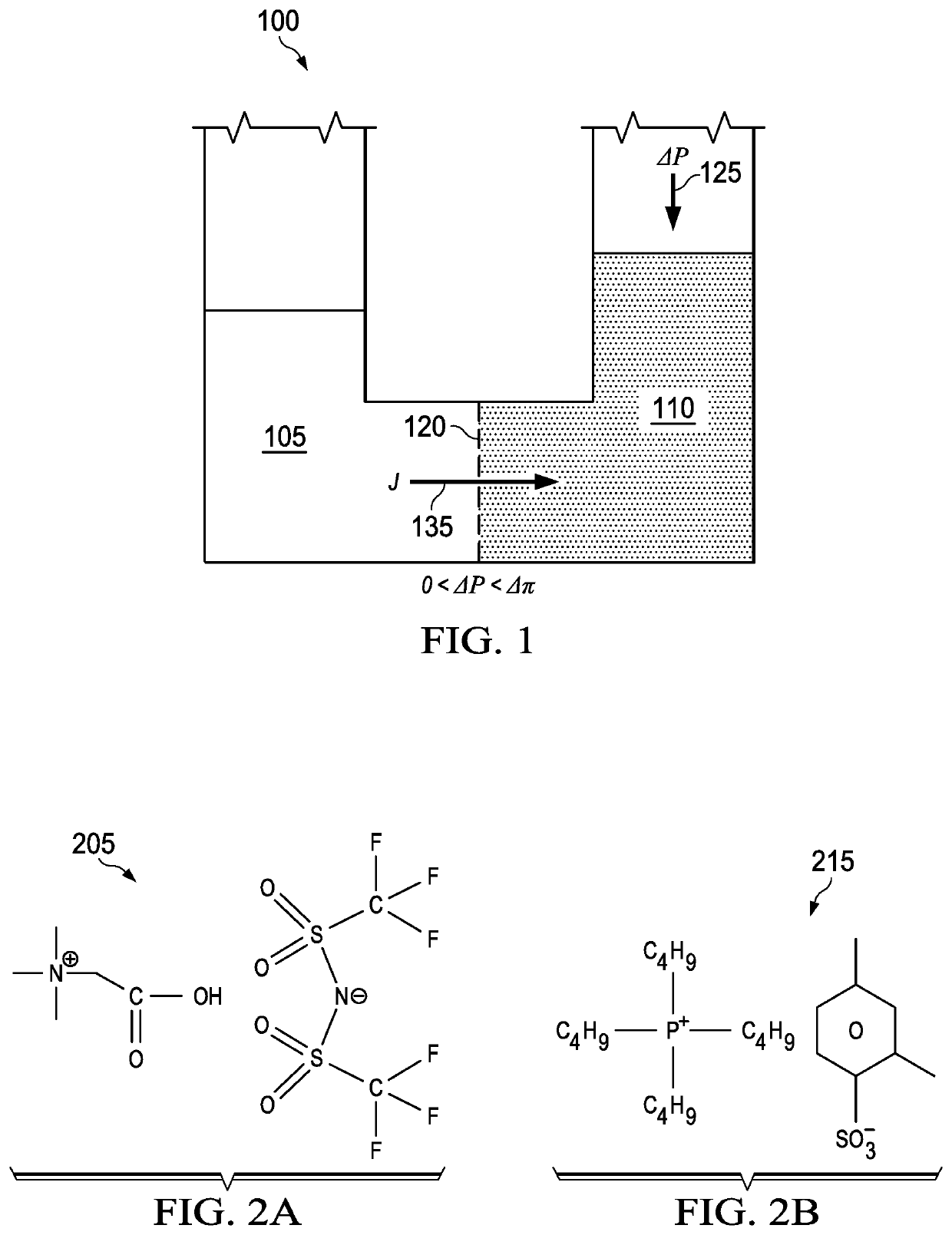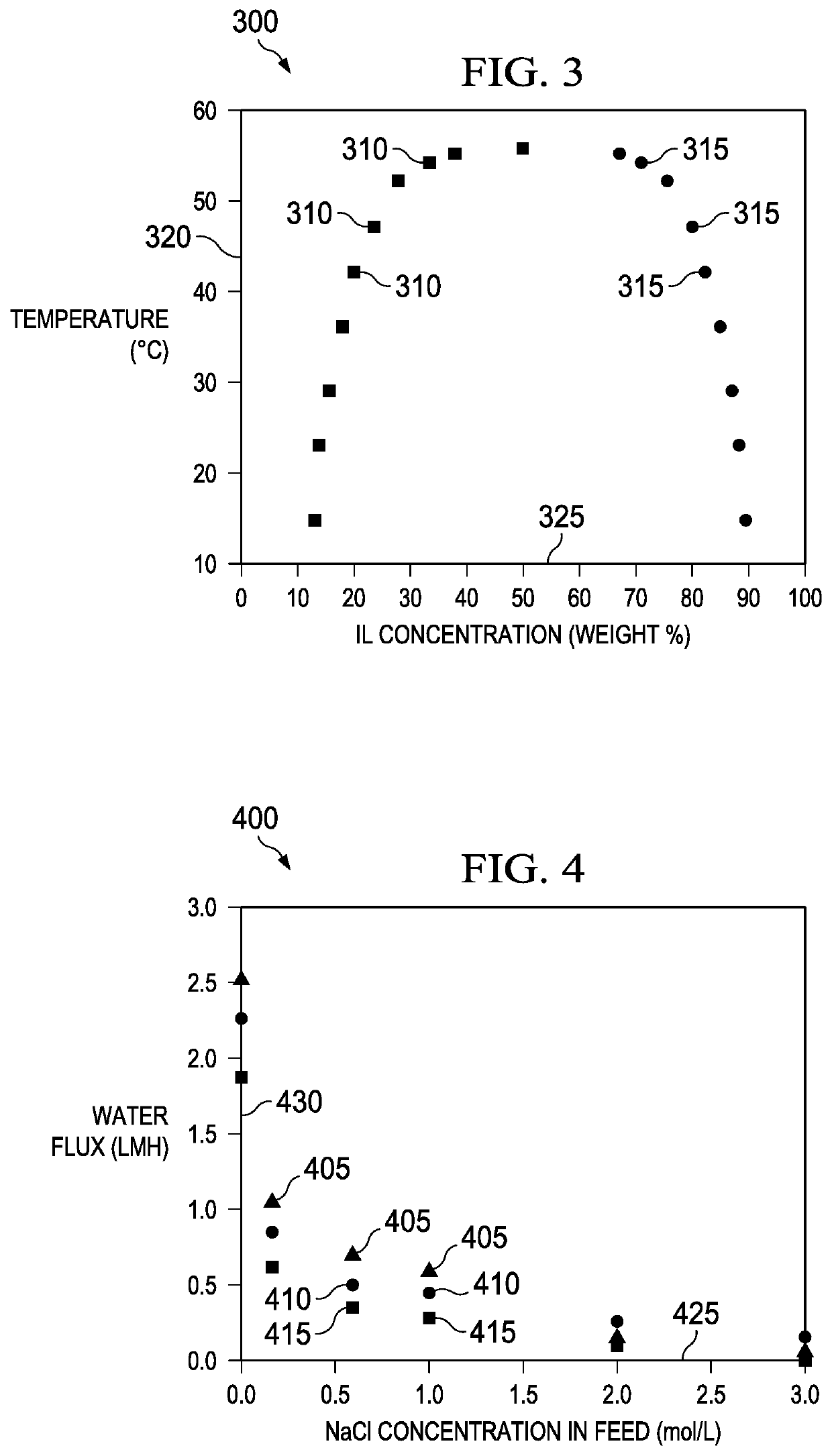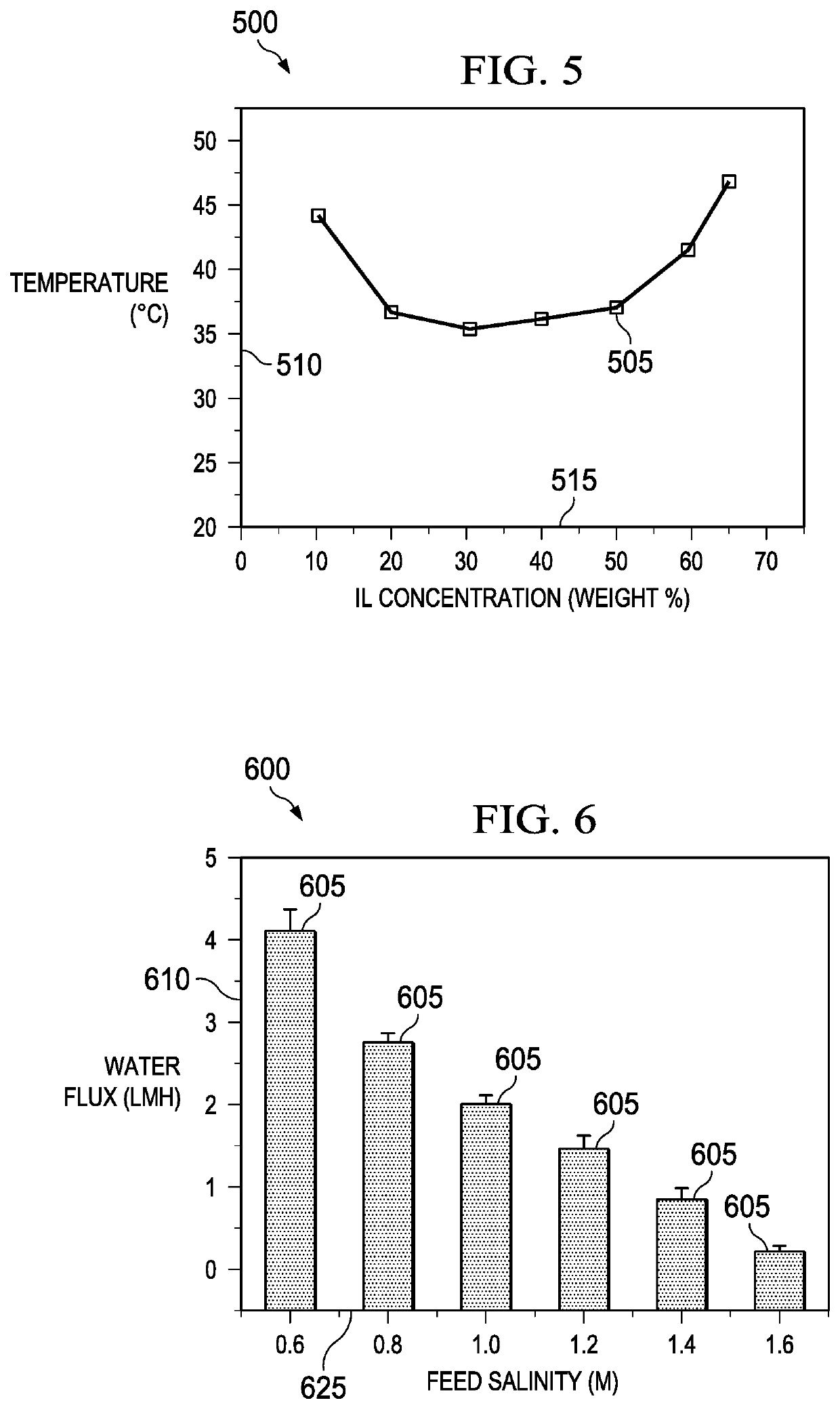Method of osmotic energy harvesting using responsive compounds and molecules
a technology of osmotic energy and responsive compounds, applied in the field of osmotic energy production and capture using responsive compounds and molecules, can solve the problems of limiting the economic feasibility of the power system, limiting improvements, and salinity fluctuations in sensitive ecosystems, so as to achieve less negative environmental impact, improve efficiency and economic effect, and deliver osmotic power more efficiently and economically
- Summary
- Abstract
- Description
- Claims
- Application Information
AI Technical Summary
Benefits of technology
Problems solved by technology
Method used
Image
Examples
Embodiment Construction
[0030]To describe with principles of the present invention, a diagram of a system for harvesting of salinity gradient energy by PRO is schematically shown in FIG. 1. In FIG. 1, a schematic diagram of a general osmotic liquid pressure chamber 100 is shown with a semi-permeable membrane 120 placed between two solutions, which include a feed solution (pure water, lower concentration) 105 and draw solution (e.g. saline water, higher concentration) 110. The semi-permeable membrane 120 can reject solute, but allows the passage of water feed solution 105 into the draw solution 110.
[0031]The concentrated draw solution 110 (draw solution / saline water) has a higher osmotic pressure AP 125, and the other diluted feed solution 105 has a lower osmotic pressure (feed solution / pure water). The symbol J 135 denotes the osmotic water flux direction that occurs when a lower hydraulic pressure is imposed on the draw solution 110 compared to the osmotic pressure difference across the membrane 120. This...
PUM
 Login to View More
Login to View More Abstract
Description
Claims
Application Information
 Login to View More
Login to View More - R&D
- Intellectual Property
- Life Sciences
- Materials
- Tech Scout
- Unparalleled Data Quality
- Higher Quality Content
- 60% Fewer Hallucinations
Browse by: Latest US Patents, China's latest patents, Technical Efficacy Thesaurus, Application Domain, Technology Topic, Popular Technical Reports.
© 2025 PatSnap. All rights reserved.Legal|Privacy policy|Modern Slavery Act Transparency Statement|Sitemap|About US| Contact US: help@patsnap.com



